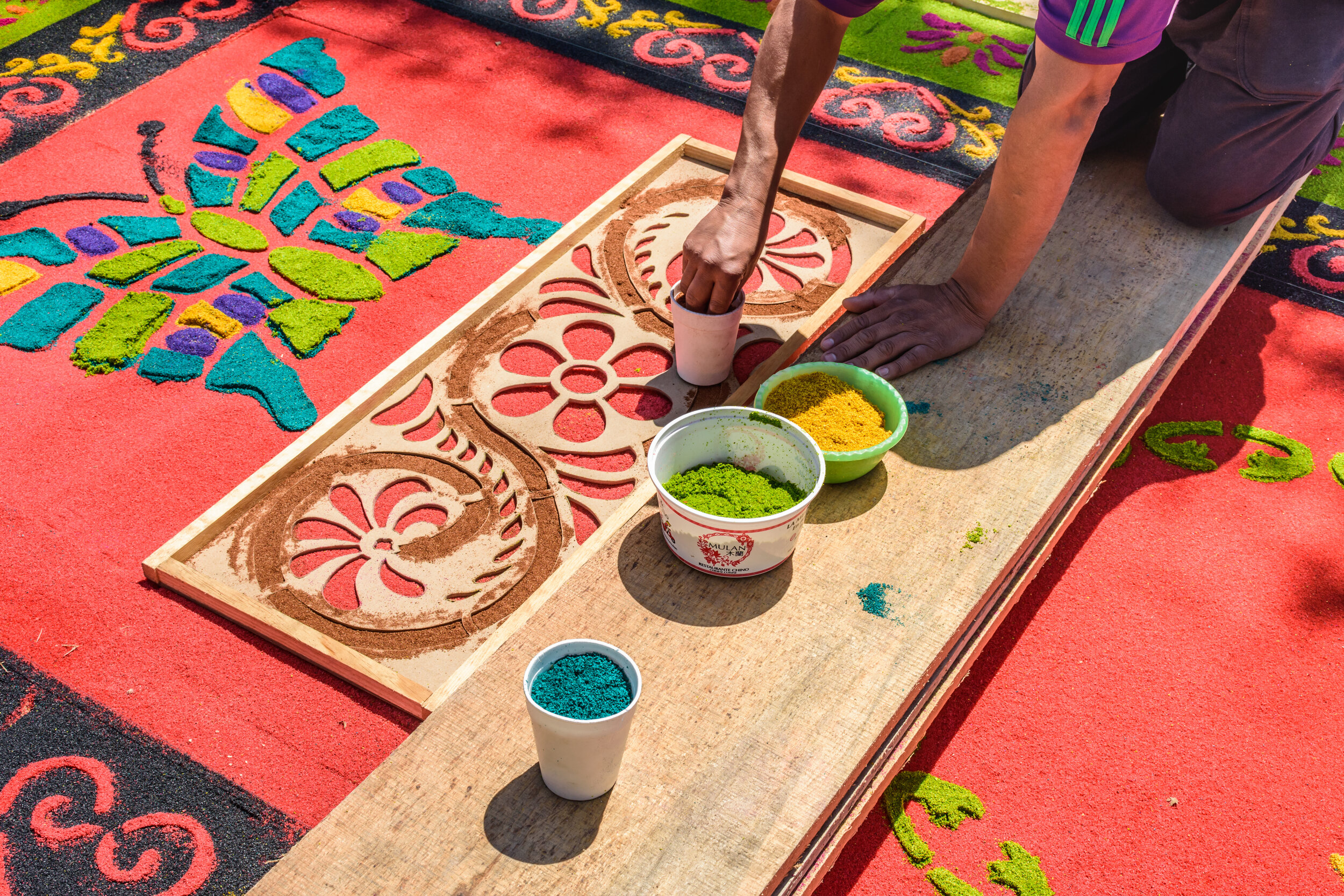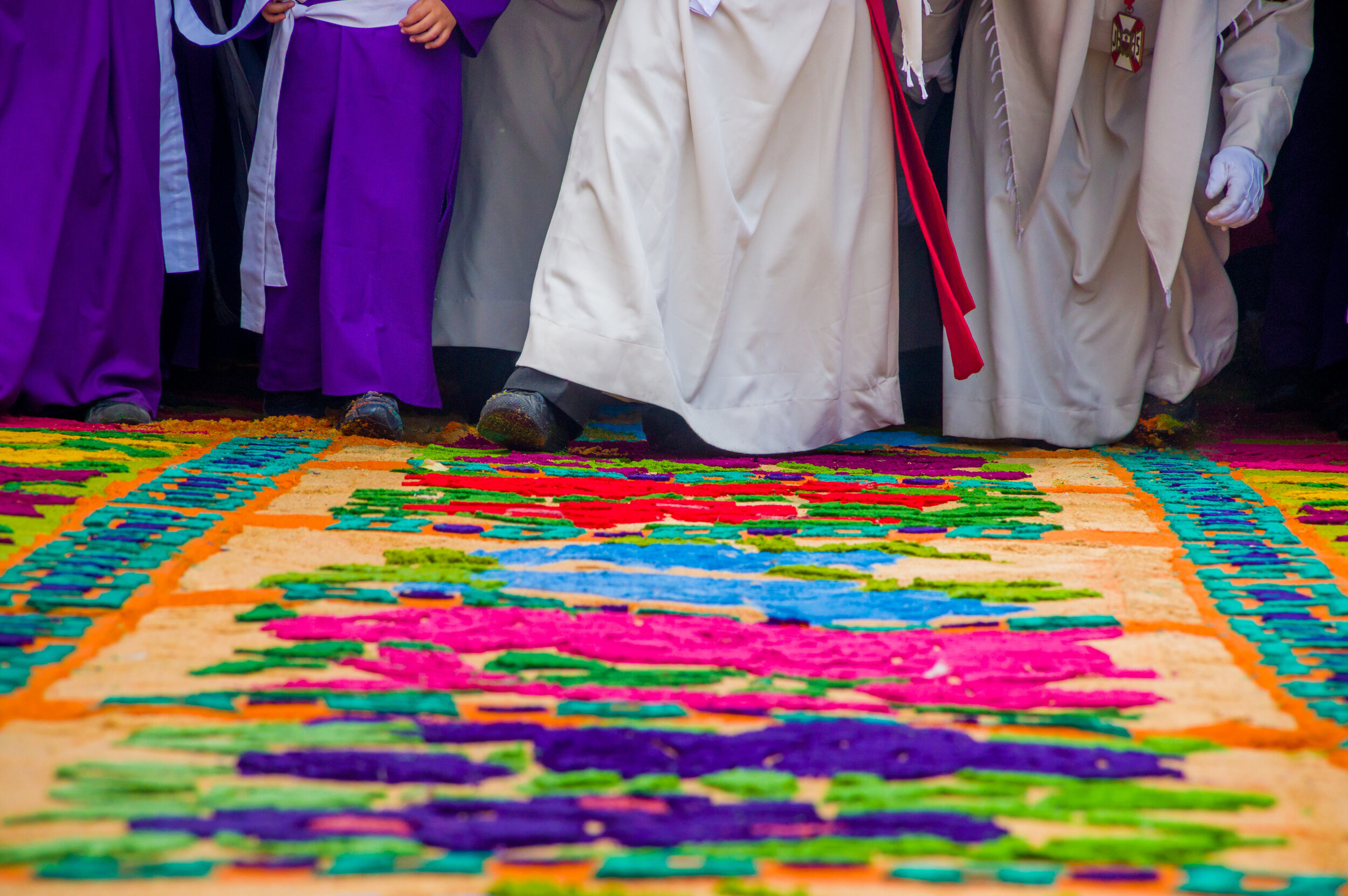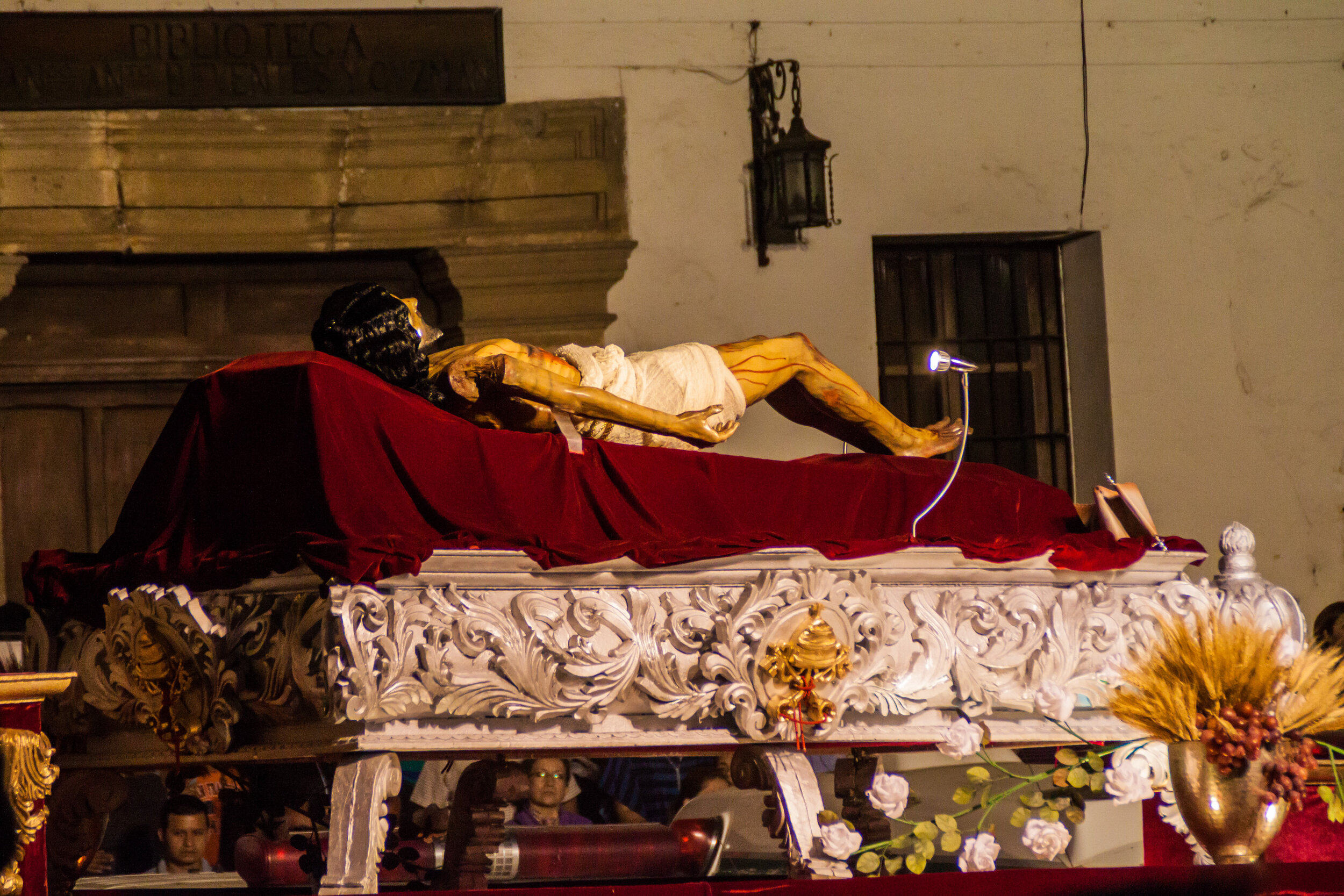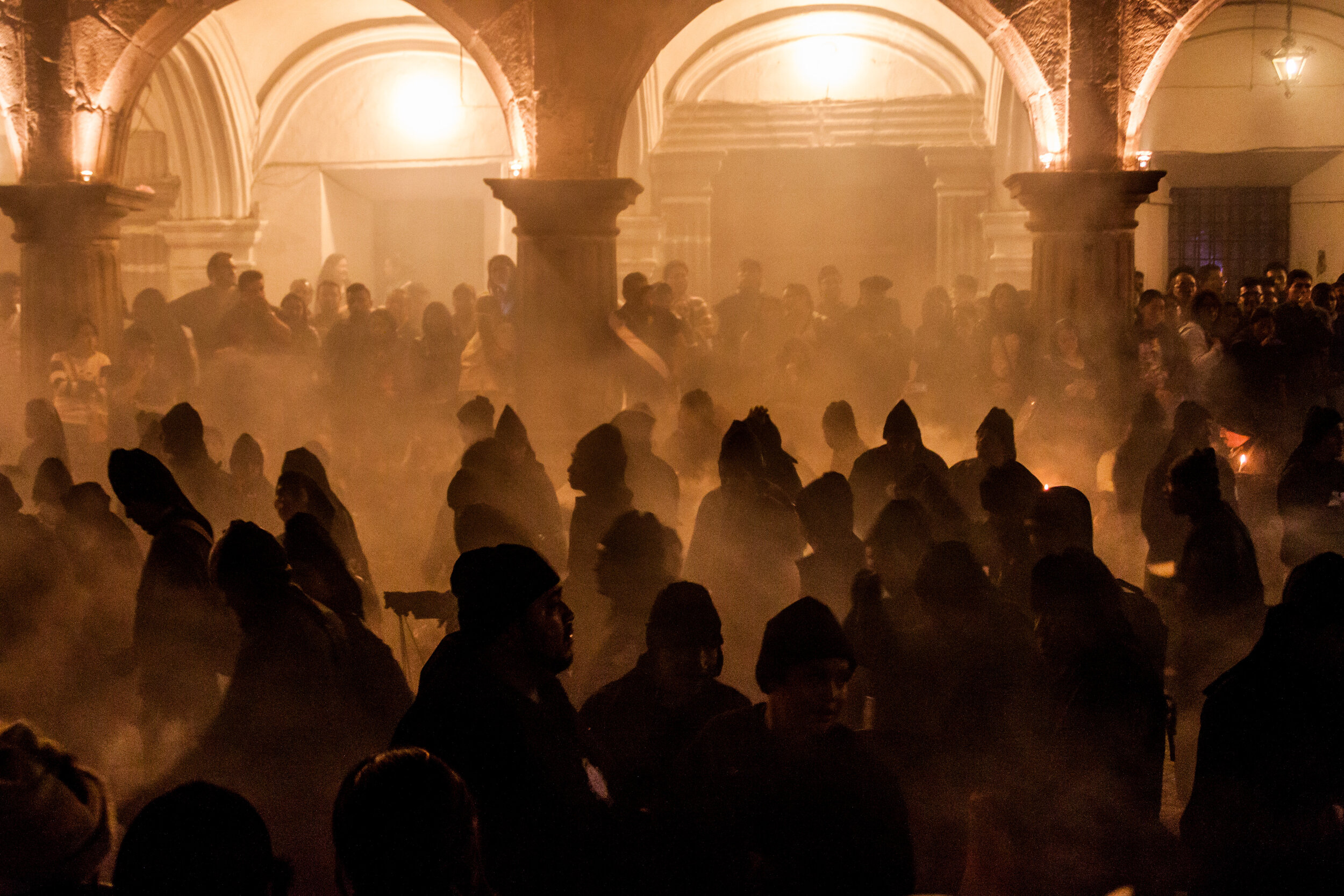Semana Santa in Guatemala: a vibrant tradition & celebration of the senses
Alfombras can be made using dyed sawdust, sand, flowers, feathers, fruits, or other natural materials up to the discretion and skill level of the talented artists who create them.
Semana Santa or “Holy Week” is a week-long biblically inspired tradition that takes place during the last week of Lent before Easter (March 28- April 3). The community goes to great lengths decorating and preparing for the symbolic tribute to the life and death of Jesus. Under normal circumstances pre-coronavirus, thousands of people from all walks of life would gather in elaborate processions and ceremonies in the streets to celebrate.
This photo was taken mere seconds before an alfombra is walked on, and consequently destroyed by, the procession of Semana Santa.
Alfombras: Colorful “rugs” fit for Mayan kings
Perhaps one of the most visually striking aspects of Semana Santa are the alfombras, which are “rugs” constructed with dyed sawdust in intricate patterns laid out on the streets of Guatemala. These representations of religious devotion take hours, if not days to create and the craftsmanship is immaculate - the colorful depictions are a quintessential Guatemalan feast for the eyes.
The symbolism of these carpets is a perfect depiction of Guatemala itself - a unique blend of the ancient Maya and Spanish Catholic influence. The tradition of Semana Santa itself has its origins in the Spanish conquest of Guatemala in the 16th Century, but “la elaboración de alfombras” (the elaboration of carpets) is a nod to the Mayan tradition of laying out elaborate carpets of feathers and flowers for kings to walk on.
The processions carrying Jesus Christ and the Virgin Mary follow shortly after the “rugs” are finished and proceed over them and then are swept away.
An altar depicting the events of the Bible
The extravagant altars
One of the largest aspects of Semana Santa are the processions that go throughout the streets, depicting scenes from the Bible. Churches assemble massive altars that can weigh thousands of pounds. It is an honor to carry them, but it is taxing work and sometimes requires over 100 men taking turns throughout to just carry one. This all traces back to the Holy Week symbolizing patrons’ devotion to their faith.
The incense-born fog hanging low over the religious processions of the Holy Week.
A ghostly Atmosphere steeped in Incense
During a typical Semana Santa, you won’t be able to walk anywhere without smelling incense. There are a few different types of incense burned to purify the air - namely Frankincense, Myrrh, and Copal, which are all ingredients we know intimately.
We use Copal in our Copal & Lemongrass Deodorant and Mayan Bliss Balm, Myrrh is in our Chamomile & Myrrh Face Serum and Ouch Ointment, and Frankincense, Myrrh, and Copal are all in our Mayan Incense Soap. Copal has been used traditionally by the Maya in Guatemala for burning during sacred ceremonies and is believed to purify the air and spirit - it is a resin similar to amber with a smoky, sweet aroma. In skincare, Copal is known to stimulate blood circulation, and thus can improve your complexion. Copal is used medicinally in Guatemala to kill fungal outbreaks because it is an antibacterial. It is also an astringent, which works to tighten the skin, and is therefore great in face toners.
Not only does the incense create a signature scent of the event, it also creates a thick ghost-like fog that clings to the streets, making Semana Santa a unique sensory experience.
Although the elaborate festivities of Semana Santa will not be taking place this year due to Coronavirus, there are still ways to celebrate safely at home, should you so choose. You can burn incense to cleanse your space, create an altar at home, or take the time to research the significance of the event and look at all the beautiful pictures capturing years past celebrations.








This gentle face serum is an ultra-soothing, nourishing aid to irritated or damaged skin that relieves redness and burning, and repairs the skin's surface with infused nutrients. Best for Normal/Sensitive skin.